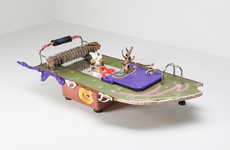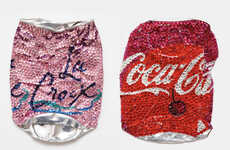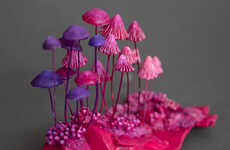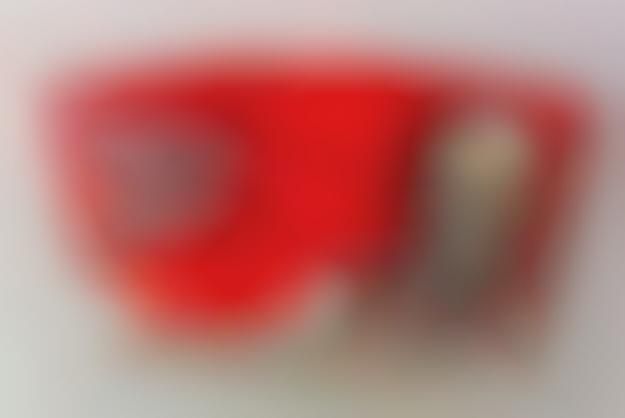
These Wooden Carvings of Trash by Tom Pfannerstill Question Consumerism
M — July 17, 2014 — Art & Design
References: tpfannerstill & psfk
Artist Tom Pfannerstill recently put together a series of wooden carvings of everyday discarded trash for his series titled 'From the Street.' The installation look into consumerism and how deeply buying and consuming goods occupies our day-to-day lives.
These realistic wood carvings are designed to look just like real pieces of trash one would find flattened on the street corner. Pfannerstill replicates things like fast food packaging, beer cases and even laundry soap detergents all by hand from blocks of wood. Each of the pieces of labeled trash that Pfannerstill replicates speaks to a piece that Pfannerstill picked up one day off of the street. Pfannerstill artwork looks at the longevity of consumerism and how product packaging lives this fleeting livelihood till it ends up nothing more than trash on the street.
These realistic wood carvings are designed to look just like real pieces of trash one would find flattened on the street corner. Pfannerstill replicates things like fast food packaging, beer cases and even laundry soap detergents all by hand from blocks of wood. Each of the pieces of labeled trash that Pfannerstill replicates speaks to a piece that Pfannerstill picked up one day off of the street. Pfannerstill artwork looks at the longevity of consumerism and how product packaging lives this fleeting livelihood till it ends up nothing more than trash on the street.
Trend Themes
1. Sustainable Art - Creating art from discarded objects highlights the potential for sustainable practices in the art industry.
2. Consumerism Critique - Art that questions consumerism opens up a niche for artists to explore social commentary and provoke thought.
3. Repurposed Materials - Using discarded objects as art materials showcases the potential for repurposing and upcycling in various creative industries.
Industry Implications
1. Art and Design - Artists can embrace the concept of using discarded objects as materials to create unique and impactful artworks.
2. Sustainability - The sustainable art movement can inspire businesses and industries to adopt eco-friendly practices and reduce waste.
3. Consumer Goods - Art that critiques consumerism can encourage the development of sustainable packaging and mindful product design.
0.9
Score
Popularity
Activity
Freshness























